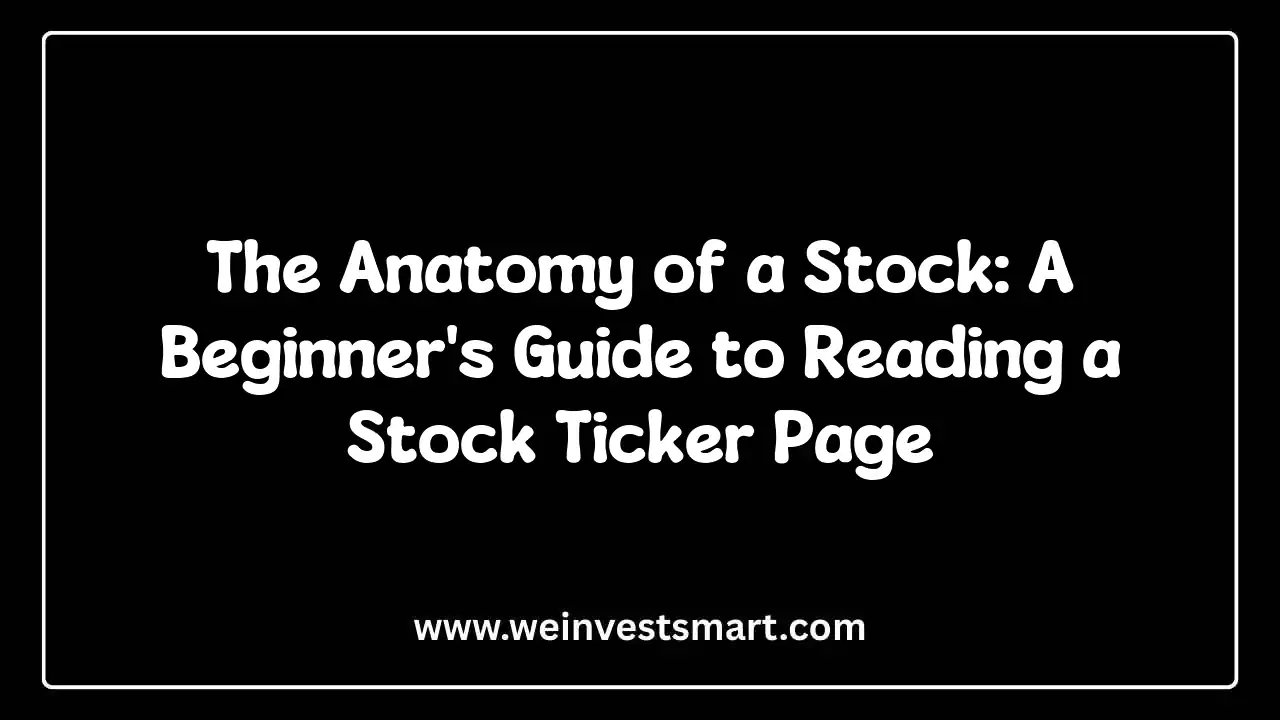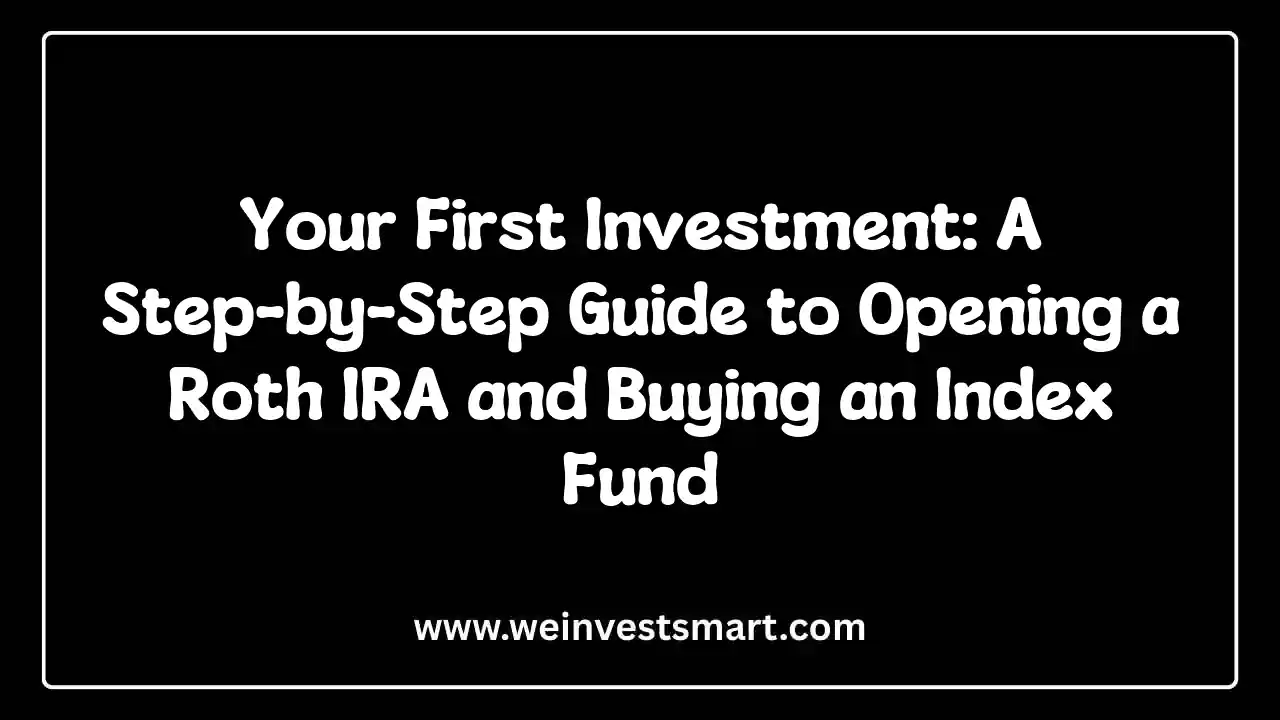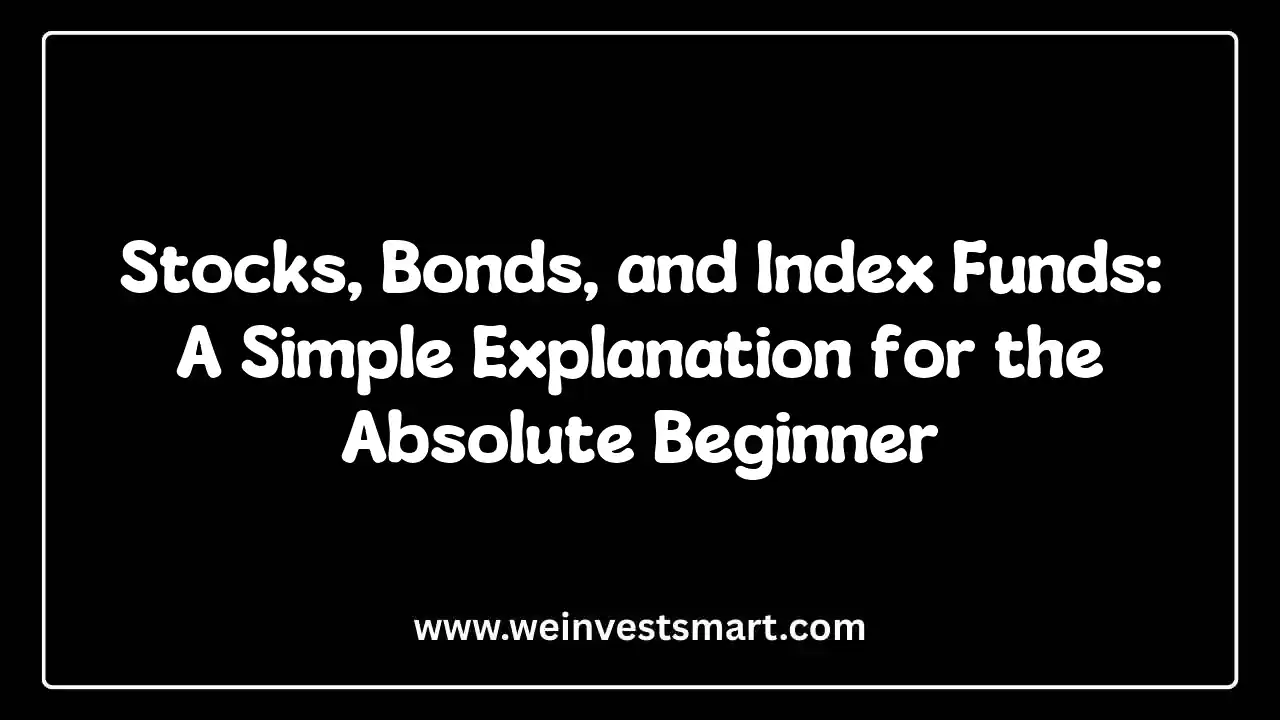· WeInvestSmart Team · investment-strategies · 10 min read
Market Order vs. Limit Order: The Critical Difference That Can Save You Money
Explain the mechanics of how stock orders are executed. Use real-world examples to show when a market order is appropriate versus when a limit order can protect an investor from paying too much.
Most people believe that when you buy a stock, you just click the “Buy” button and the magic happens. The price you see on the screen is the price you pay. But here’s the uncomfortable truth: that’s a dangerous oversimplification. The stock market is a dynamic, live auction, with prices fluctuating every millisecond. The way you choose to enter that auction—the type of “order” you place—can have a significant impact on the price you ultimately pay. Going straight to the point, understanding the difference between a Market Order and a Limit Order is not an advanced topic for Wall Street traders; it is a fundamental, non-negotiable piece of knowledge for any serious investor.
We live in a world of one-click checkouts. We’re conditioned by Amazon and Uber to expect instant execution at a predictable price. We bring this consumer mindset to the stock market, assuming that buying a share of Apple should be as simple as buying an apple at the grocery store.
But what if we told you that the price you see quoted on your screen is already out of date? It’s the price of the last transaction, not necessarily the price of the next one. Here’s where things get interesting. In the moments it takes you to place your trade, especially with a volatile stock, the price can change. And this is just a very long way of saying that the order type you select is your primary tool for controlling that uncertainty.
The Foundation: Understanding the Bid-Ask Spread
Before we can understand order types, we must understand the auction. For any stock, at any given moment, there are two prices that matter:
- The Bid Price: This is the highest price a buyer is currently willing to pay for a share.
- The Ask Price: This is the lowest price a seller is currently willing to accept for a share.
The difference between these two is called the bid-ask spread. Think of it like a negotiation at a flea market. A seller is asking $10 for a lamp (the ask price). You offer $8 (the bid price). The spread is $2. A trade only happens when a buyer is willing to meet the seller’s price (pay the ask) or a seller is willing to meet the buyer’s price (accept the bid). For highly traded stocks like Apple, this spread is usually just a penny. For less-traded, more volatile stocks, it can be much wider. This is the environment in which your order operates.
The Market Order: The “Get It Done Now” Command
Going straight to the point, a market order is an instruction to your brokerage to buy or sell a stock at the best available price immediately. It is the simplest and fastest way to execute a trade.
When you place a market order to buy, you are essentially shouting into the auction, “I don’t care about the exact price, just give me the shares right now at whatever the sellers are asking!” Your order will be executed almost instantly at the current ask price.
When is a Market Order Appropriate?
The funny thing is that for most long-term, beginner investors, a market order is often perfectly fine, under certain conditions.
- You are buying a large, highly liquid stock: For companies like Microsoft (MSFT) or an S&P 500 ETF (like VOO), the trading volume is enormous and the bid-ask spread is a penny. The price is very stable. The price you see is almost certainly the price you’ll get.
- You are investing for the long term: If you plan to hold a stock for 10, 20, or 30 years, whether you pay $150.05 or $150.07 per share is completely irrelevant in the grand scheme of things. Your top priority is getting your money into the market to benefit from long-term growth.
- You are placing the trade during market hours: A market order should only ever be placed when the stock market is open (typically 9:30 AM to 4:00 PM Eastern Time).
The Dangers of a Market Order: “Slippage” and After-Hours Trading
The primary risk of a market order is slippage. Slippage is the difference between the price you expected to get and the price at which the trade was actually executed. This is a major concern with:
- Volatile, thinly-traded stocks: If you’re trying to buy a small-cap stock with a wide bid-ask spread, the price could jump significantly between the time you place your order and the time it’s executed. You could end up paying much more than you intended.
- Placing an order outside of market hours: This is the cardinal sin of market orders. If you place a market order at 10 PM on a Sunday night after some major news has broken, your order will be executed the second the market opens on Monday morning. In that opening frenzy, the price could be wildly different from the closing price on Friday, and you are obligated to accept whatever that price is.
And this is just a very long way of saying that a market order gives you certainty of execution but uncertainty of price.
The Limit Order: The “On My Terms Only” Command
If a market order is about speed, a limit order is about control.
Going straight to the point, a limit order is an instruction to your brokerage to buy or sell a stock at a specific price or better. You are setting the maximum price you are willing to pay for a stock or the minimum price you are willing to sell it for.
When you place a limit order to buy, you are calmly stating to the auction, “I am willing to buy 10 shares of this stock, but I refuse to pay more than $150.00 per share. If you can find me a seller at that price or lower, execute the trade. If not, my order remains open until you can.”
How a Limit Order Works in Practice
Let’s say a stock is currently trading with a bid of $149.95 and an ask of $150.05.
- You place a limit order to buy at $150.00. Your order is now sitting on the books. It will not execute immediately because the lowest selling price is $150.05. Your order will only be filled if a seller comes along who is willing to lower their ask price to meet your $150.00 bid.
- You place a limit order to buy at $150.05 (or higher). Your order will likely execute immediately because you have met the current ask price. You’ve essentially used a limit order to act like a safer market order, guaranteeing you won’t pay more than the current asking price.
This sounds like a trade-off, because your order might not execute, but it’s actually a desirable thing. We covet the limit order because it provides complete protection against paying more than you’re comfortable with. It is your ultimate defense against slippage.
The “Risk” of a Limit Order: It Might Not Be Filled
The primary downside of a limit order is that there is no guarantee of execution. If you set your limit price too low for a buy order (or too high for a sell order), the market price may run away from you, and your trade will never be filled.
You can also set a time limit on your order:
- Day Order: The order is only active for the current trading day. If it’s not filled by the closing bell, it is automatically canceled.
- Good ‘Til Canceled (GTC): The order will remain active for a set period (often 60-90 days) until it is either filled or you manually cancel it.
And this is just a very long way of saying that a limit order gives you certainty of price but uncertainty of execution.
Head-to-Head: A Simple Case Study
Let’s imagine a fictional company, “Volatile Innovations Inc.” (TICKER: VOLT). It’s a small, exciting tech company, and its stock price moves around a lot. The current quote you see is $25.00.
Scenario 1: You Place a Market Order to Buy 100 Shares You hit the “Buy” button. In the next few seconds, a flurry of trades happens, and the bid-ask spread is wide. Your order gets executed at an average price of $25.20 per share. You’ve just experienced $0.20 of slippage per share, costing you an extra $20 on your purchase. It’s not a disaster, but it’s a completely avoidable cost.
Scenario 2: You Place a Limit Order to Buy 100 Shares at $25.05 You’ve decided you’re comfortable with the current price but want to protect yourself from a sudden price spike. You set your limit at $25.05.
- Possible Outcome A: The price dips for a moment, and you get your shares filled at $25.04. You got a better price than the market order and were protected from the upside.
- Possible Outcome B: The stock takes off and never comes back down. Your order is never filled, and you “missed out” on the gains.
But what do we do with this information? We recognize that “missing out” is often the better outcome. A disciplined investor would rather miss an opportunity than overpay for an asset based on a bad execution.
The Bottom Line: Your Simple Rulebook for Order Types
The difference between these two order types is a fundamental concept in stock market basics. Here is your simple, actionable guide.
You should use a MARKET ORDER when:
- You are buying a highly liquid, large-cap stock or a major ETF.
- You are investing for the long term, and a few pennies per share is irrelevant.
- You are placing your trade during the middle of the trading day when the market is stable.
- Your top priority is ensuring your trade gets executed immediately.
You should use a LIMIT ORDER when:
- You are buying a less liquid, more volatile stock (like a small-cap company).
- You are placing a large order, and you want to avoid moving the market.
- You are placing a trade outside of normal market hours (pre-market or after-hours).
- You have a specific price in mind and are unwilling to pay a penny more.
- When in doubt. The funny thing is that using a limit order is almost never the “wrong” choice. Setting your limit at or slightly above the current ask price gives you all the benefits of a market order’s speed with the absolute price protection of a limit order. It is the default choice of a disciplined investor.
The world of investing for beginners can seem complex, but success often boils down to mastering a few simple, powerful concepts. Understanding the difference between a market order and a limit order is one of them. It’s about deciding what you value more in a given transaction: speed or control. By making that choice consciously, you move from a passive buyer to an active, intelligent participant in the market.
Market Order vs. Limit Order FAQ
What is a market order?
A market order is an instruction to buy or sell a stock at the best available price immediately. It guarantees execution but not price, as the trade happens at the current market price.
What is a limit order?
A limit order is an instruction to buy or sell a stock at a specific price or better. It provides price control but may not guarantee execution if the market doesn’t reach your specified price.
When should I use a market order?
Use a market order when trading highly liquid stocks during market hours, for long-term investing where a few pennies per share don’t matter, and when speed of execution is more important than price precision.
When should I use a limit order?
Use a limit order when trading less liquid or volatile stocks, placing large orders, trading outside normal hours, or when you have a specific price in mind and want to avoid paying more than you’re comfortable with.
What is slippage?
Slippage is the difference between the expected price of a trade and the actual price at which it executes. It commonly occurs with market orders in volatile or illiquid markets.
This article is for educational purposes only and should not be considered personalized financial advice. Consider consulting with a financial advisor for guidance specific to your situation.



